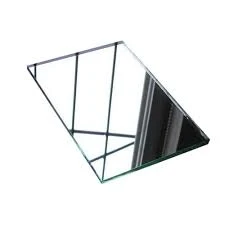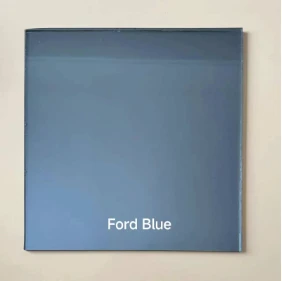Frosted privacy glass has emerged as a pivotal solution in modern architectural designs, offering both aesthetic appeal and functional benefits. Its singular charm lies in how it balances transparency and privacy, making it a versatile material for various applications, from residential homes to corporate offices.

Frosted privacy glass boasts the unique capability of diffusing light while obscuring vision, thus ensuring that privacy is maintained without sacrificing natural illumination. This distinctive feature makes it ideal for office partitions, conference rooms, and workspaces where confidentiality is crucial yet an open, airy environment is desired. By allowing light to flow while keeping prying eyes at bay, frosted privacy glass promotes an inviting ambiance that fosters productivity and creativity.
The manufacturing process of frosted glass involves sandblasting or acid etching. Sandblasting creates a textured effect by bombarding the glass surface with high-pressure particles, while acid etching uses chemical reactions to produce a smooth, uniform finish. Both methods provide a striking, matte appearance that is not only aesthetically pleasing but also significantly reduces glare, a benefit that enhances comfort in bright environments.

In residential settings, frosted privacy glass finds its applications most commonly in bathrooms and shower enclosures. It offers a sleek and modern alternative to traditional opaque materials, maintaining a sense of openness and elegance without compromising privacy. Furthermore, its moisture-resistant properties ensure that it remains durable and easy to maintain, as it does not warp or discolor with exposure to humidity.
From an energy efficiency standpoint, frosted privacy glass can contribute to reduced energy costs. By diffusing sunlight evenly, it minimizes the need for artificial lighting, thereby cutting down on electricity usage. Some advanced variations are even insulated or laminated, providing additional thermal benefits by maintaining indoor temperatures, which can be particularly advantageous in climates with extreme seasonal variations.
frosted privacy glass
Specialist expertise is vital in selecting the right type of frosted glass, depending on the specific needs of a project. For instance, laminated frosted glass is preferable in situations where enhanced safety and security are paramount, as it holds together when shattered. On the other hand, a simple frosted film can be applied for temporary installations or budget-conscious endeavors, offering flexibility without permanent commitment.
Trustworthiness and authoritativeness in industry standards are achieved through certifications and compliance with safety regulations, such as those provided by ASTM International or the safety glazing standards under the CPSC 16 CFR 1201 in the United States. Such certifications assure clients that the frosted glass products they invest in are of high quality, safe, and reliable, providing peace of mind alongside their functional and aesthetic benefits.
Beyond conventional uses, frosted privacy glass adds a touch of elegance and modernity to furniture such as tabletops and doors, as well as decorative features like room dividers or artistic installations. Its understated yet sophisticated appearance complements contemporary design trends, making it a popular choice among interior designers aiming to create spaces that are both functional and visually appealing.
As sustainability becomes increasingly critical, the versatility of frosted privacy glass in being incorporated into eco-friendly design practices cannot be overstated. Recyclable and often manufactured with reduced environmental impact, it aligns with green building principles, making it a forward-thinking choice for new developments that prioritize environmental responsibility.
In conclusion, the multipurpose nature of frosted privacy glass makes it a cornerstone material in both residential and commercial architecture. Its ability to marry form and function enhances privacy, fosters energy efficiency, and adds a touch of style, proving indispensable in the creation of modern, sustainable spaces. Emphasizing trustworthiness and expertise, its application not only reflects current design trends but also anticipates future needs for innovative, high-performance building materials.



